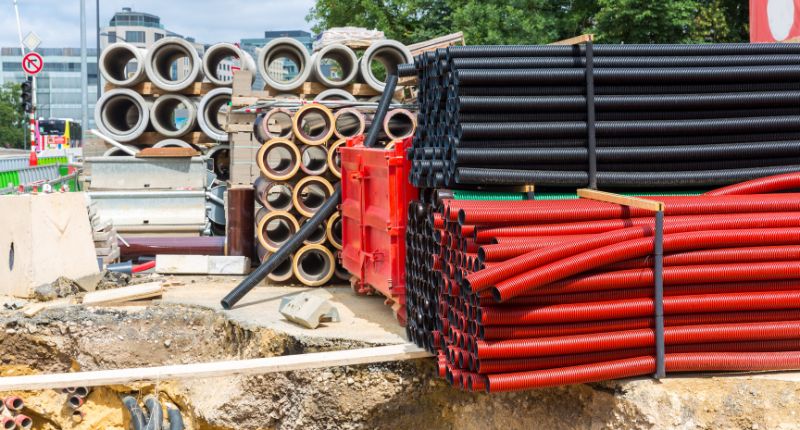
- Material prices normalise in Q3 2023, with some variances.
- China's property sector troubles impact global material prices, affecting Australia.
- Australia's construction sector faces challenges despite falling material prices.
Material prices have stabilised in Q3 2023, marking the end of 16 consecutive quarters of cost hikes since December 2019, according to the Altus Group’s latest Australian construction material price outlook Q3 2023 Edition.
Material prices normalise
While prices stabilised over the quarter on average, there were notable differences in price movements between material categories. For instance, brick and diesel prices rose over the quarter, while the prices of structural timber and steel products fell. Domestic and international developments caused these price swings.
Construction material price trends (Q3 2023 – Australia)
| Material | Q3 2023 | YTD 2023 |
| Structural steel | -1.50% | -15.30% |
| Rebar | -2.50% | -4.40% |
| Concrete | 1.30% | 11.50% |
| Structural timber | -2.50% | -7.60% |
| Plasterboard | 0.20% | 13.50% |
| Bricks | 4.60% | 10.80% |
| Copper pipes | -0.50% | 4.40% |
| Diesel | 10.10% | -3.00% |
Source: Altus Group.
In Australia, a decline in new housing construction activity saw suppliers reduce the cost of preliminary construction materials to remain competitive. A spike in energy prices pushed manufacturing costs upwards, including bricks.
The nation’s financial environment continues to be challenging, evidenced by the decline of the Australian dollar and the recent cash rate target hike. The Reserve Bank of Australia’s (RBA) move to raise the cash rate target by 25 basis points to 4.35% places interest rates at a 12-year high.
Although the Consumer Price Index (CPI) dropped to 5.4% this September, it was well above the RBA’s target inflation rate of 2 to 3%, implying more hardship on the horizon.
Real estate sector’s interdependence with China
Several global developments have been affecting the real estate market, such as the recent geopolitical unrest in the Middle East and the economic slump in China.
The RBA warned in November that a steep decline in China’s property sector could spiral into a global slowdown, undermining commodity prices and lowering Chinese demand for Australian goods and services.
About 70% of China’s household wealth has been connected to real estate, and the sector’s troubles have been emblematic of the country’s poor economic conditions. China recently introduced several stimulus measures to bolster the country’s floundering property sector, such as lowering minimum deposits to 20% on first homes.
China’s largest private property developer, Country Garden, has defaulted, selling its Australian assets. On the other hand, the second largest real estate developer, Evergrande, owed AU$325 billion, a figure larger than Russia’s national debt.
These insolvencies have had disastrous flow-through effects on building material demand in China and, subsequently, for materials in Australia.
Australia’s construction woes
Although material prices have fallen, margins remain tight, and construction companies continue to flop.
One of the recent companies that went belly up, Sydney-based National Projects & Maintenance (NPM), worked on developments for some of Australia’s largest property companies. According to NPM chief executive Daniel Afonso, the company’s downfall was due to familiar challenges pervading the sector, including labour shortages, the high-interest rate environment, and low demand from the commercial sector.
Builders and subcontractors have shied away from residential apartment projects, believing them too risky. Richard Crookes Construction founder, Jamies Crookes, told the Australian Financial Review last month that apartment development has fallen significantly compared to five years ago because residential projects were too demanding.
This will likely throw a wrench in Federal and State housing targets like the Australian Government’s ambitious target to deliver 1.2 million homes over the coming five years.
In the long term, Australia’s commitment to reducing carbon emissions will drive up construction costs further, with companies being mandated to divulge more emission sources. From the middle of 2024, companies netting a revenue over $500 million will be expected to disclose their Scope 3 emissions to the Australian Securities and Investments Commission (ASIC).







